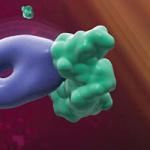
Research Topics
The Drug Design and Development Section (DDDS) is focused to identify drugs that improve brain function and/or forestall the neurodegenerative process in age-related neurodegenerative disorders. Data arising from studies on neurodegenerative and neuroprotective signaling pathways are used to identify potential drug targets. Candidate drugs are designed and synthesized and then screened for efficacy in cell culture and animal models, and the most effective compounds are moved through preclinical studies into clinical trials. Novel as well as re-positioned drugs that mitigate neurodegenerative processes are currently in clinical trials, and novel compounds to dampen neuroinflammatory cascades involved in acute and chronic neurodegenerative disorders are at various preclinical stages of development.
Biography
Nigel Greig was trained as a pharmacologist with a background in medicinal chemistry and physiology, and gained his Ph.D. from the University of London (Department of Pharmacology, Royal College of Surgeons, England). The research portion of his Ph.D. was undertaken within the Cancer Chemotherapy Department of the Imperial Cancer Research Fund (ICRF) under the mentorship of Prof. Kurt Hellmann – who took the drugs razoxane and dexrazoxane (Zinecard, Cardioxane) from concept to the clinic.
Leaving the ICRF and Britain in 1982, Nigel joined the Laboratory of Neuroscience within the Intramural Research Program (IRP), National Institute on Aging (NIA), National Institutes of Health (NIH), as a Post-doc in the US. His initial studies focused on optimizing the delivery to and action of drugs within the brain. This resulted in the development of drug candidates for the treatment of brain tumors and cancers of the breast, lymphatics and ovaries, as well as technology for the brain delivery of neuropeptides, antisense oligonucleotides and proteins. Leaving NIA in 1989, Nigel was one of the initial scientists in the California-based Alzheimer biotechnology company, Athena Neurosciences, which later became a key part of Elan Pharmaceuticals and is now part of Perrigo. Athena was launched on technology deriving from Nigel's NIA research as well as separate technology from the Selkoe Laboratory, Harvard University.
Returning to NIA as a tenured scientist in 1992, Nigel's research has evolved into his present focus, the design and development of drugs for the treatment of degenerative disorders prevalent in aging, with particular emphasis on chronic (Alzheimer's and Parkinson's disease) and acute (traumatic brain injury and ischemic stroke) neurodegenerative disorders, and type 2 diabetes. He heads the Drug Design & Development Section within the Translational Gerontology Branch, IRP, NIA, NIH, located in Baltimore, MD, USA.
Nigel's program combines cellular and in vivo pharmacology and neurobiology with medicinal chemistry to design and develop novel experimental drugs against rate-limiting steps involved in the pathophysiology of diseases associated with aging. In extensive studies with a core of long-time, close collaborators from academia within and outside the US, Pharma and NIH - together - they have successfully moved multiple experimental drugs from concept through preclinical studies and into human clinical trials (Phenserine, Posiphen (Buntanetap, ANVS 405), Bisnorcymserine (ANVS 301), Exendin-4 (Exenatide, PT320)). These, as well as new preclinical drugs, have been licensed from NIA, NIH, and collaborating institutions into both new startup as well as existing companies to support their clinical development to improve public health.
Publications/patents are available via the links:
Selected Publications
- Hsueh SC, Parekh P, Batsaikhan B, Vargesson N, Tweedie D, Luo W, Patel CN, Liu D, McDevitt RA, Baig AM, Kim YK, Kim S, Hwang I, Kim J, Lee MY, Carta AR, Selman WR, Hoffer BJ, Kim DS, Greig NH. Targeting neuroinflammation: 3-monothiopomalidomide a new drug candidate to mitigate traumatic brain injury and neurodegeneration. J Biomed Sci. 2025;32(1):57.
- Vijiaratnam N, Girges C, Auld G, McComish R, King A, Skene SS, Hibbert S, Wong A, Melander S, Gibson R, Matthews H, Dickson J, Carroll C, Patrick A, Inches J, Silverdale M, Blackledge B, Whiston J, Hu M, Welch J, Duncan G, Power K, Gallen S, Kerr J, Chaudhuri KR, Batzu L, Rota S, Jabbari E, Morris H, Limousin P, Greig N, Li Y, Libri V, Gandhi S, Athauda D, Chowdhury K, Foltynie T. Exenatide once a week versus placebo as a potential disease-modifying treatment for people with Parkinson's disease in the UK: a phase 3, multicentre, double-blind, parallel-group, randomised, placebo-controlled trial. Lancet. 2025;405(10479):627-636.
- Bedolla A, Wegman E, Weed M, Stevens MK, Ware K, Paranjpe A, Alkhimovitch A, Ifergan I, Taranov A, Peter JD, Gonzalez RMS, Robinson JE, McClain L, Roskin KM, Greig NH, Luo Y. Adult microglial TGFβ1 is required for microglia homeostasis via an autocrine mechanism to maintain cognitive function in mice. Nat Commun. 2024;15(1):5306.
Related Scientific Focus Areas
This page was last updated on Monday, November 24, 2025


